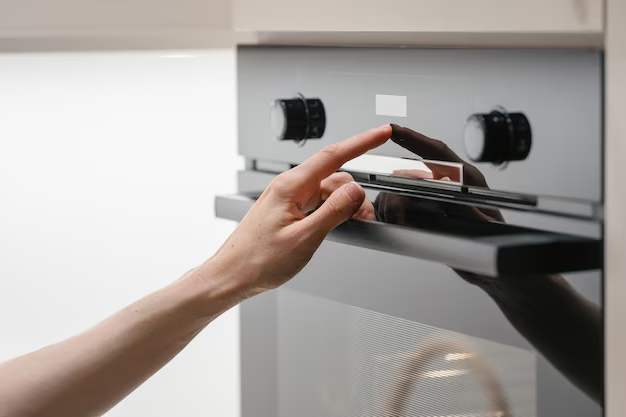Is Your Refrigerator Not Cold? Here's What You Need to Know
We've all been there—open the refrigerator door, expecting a cool blast of air, only to be met with an unsettling tepid breeze. Whether the contents of your fridge feel warmer than they should, or you've noticed your milk going bad too quickly, a refrigerator that’s not maintaining the right temperature can be a frustrating issue to tackle. But before you start considering a costly replacement, let's explore the potential causes, solutions, and preventative measures that can restore your refrigerator to its chill-offering glory.
Understanding Your Refrigerator’s Cooling Mechanism
To effectively troubleshoot why your refrigerator might not be cold, it’s beneficial to first understand how it cools. At its core, a refrigerator uses a cycle of evaporation and condensation to keep its compartments cool.
How Refrigeration Works
**1. The Compressor: This is the heart of your fridge. It compresses refrigerant gas, raising its pressure and temperature.
**2. The Condenser Coils: These coils release the heat extracted from the refrigerant, which is why they feel warm to touch. They’re usually located at the back or beneath your fridge.
**3. The Expansive Valve: Here, the high-pressure liquid refrigerant is converted back to a low-pressure gas, cooling it down significantly.
**4. The Evaporator Coils: Located inside your fridge, these coils absorb heat from the air inside, making your refrigerator interior cold.
Regular maintenance of these components can prevent malfunction. Let's dive deeper into why things might go awry.
Common Reasons Your Refrigerator Isn't Cold
Different factors can influence your refrigerator's ability to maintain a low temperature. Here's a look at some of the most common issues:
1. Incorrect Temperature Settings
It's not uncommon to accidentally change the settings of your refrigerator. If the temperature control dial has been moved, your fridge might not be as cool as you'd like.
2. Overstuffing
When a refrigerator is packed too tightly, it can obstruct the airflow required to keep items cool. Proper circulation of air within the compartments is critical for consistent cooling.
3. Blocked Vents
The refrigerator’s vents are crucial for proper air distribution. Any blockage due to food containers or frozen ice can affect cooling.
4. Dirty Condenser Coils
Dust and grime on condenser coils reduce their efficiency. As they expel heat from the fridge, any obstruction can compromise cooling performance.
5. Worn or Damaged Door Seals
The door seals, or gaskets, are responsible for airtight sealing. If they’re cracked or worn out, warm air could seep in, destabilizing the temperature.
6. Faulty Thermostat
A malfunctioning thermostat might give incorrect signals to the compressor, leading to ineffective cooling.
7. Defective Compressor
If the compressor isn’t functioning correctly, it won’t pump the refrigerant through the system efficiently, leading to cooling issues.
8. Evaporator Fan Problems
The fan is essential for circulating the cold air throughout the fridge interior. A broken fan won’t distribute air properly, leading to uneven temperatures.
⚠️ Summary of Frequent Issues:
- Incorrect Temperature Settings: Check the dial.
- Overstuffing: Ensure proper airflow.
- Blocked Vents: Remove obstructions.
- Dirty Coils: Clean regularly.
- Damaged Seals: Inspect for wear and tear.
- Faulty Components: Consider professional help for thermostats or compressors.
Diagnosing and Addressing Common Cooling Problems
Having identified some potential issues, the next step involves diagnosing and addressing them. Here's how you can tackle them effectively:
Checking and Setting the Right Temperature
Most refrigerators should have a temperature between 37°F to 40°F (3°C to 5°C) for optimal cooling. Check the manual of your specific model for assistance in adjusting these settings.
Ensuring Proper Airflow
Arranging Your Fridge
- Do not overfill: Avoid cramming items against the fridge walls.
- Leave space: Ensure there is room for air to circulate freely.
Cleaning Condenser Coils
Regularly cleaning condenser coils can drastically improve refrigerator performance. Simple steps to clean include:
- Unplugging your refrigerator.
- Locating the coils.
- Using a vacuum or brush to remove dust build-up.
Examining and Replacing Door Seals
Sometimes, the temperature might be compromised simply because the seals aren’t functioning properly.
How to Check:
- Perform the dollar bill test: Close the door with a bill stuck halfway in. If you can pull the bill out easily, the seal isn’t tight enough.
- Inspect visually: Look for cracks or signs of wear and tear.
Replacement:
Many seals can be replaced without professional help. Simply purchase the right size and model for your fridge.
Addressing Mechanical Issues
Resetting the Thermostat
Try resetting the thermostat or employing a professional if it stays warm despite adjustments.
Replacing or Repairing the Compressor
- Listen: If the compressor sounds odd (or unusually quiet), it might need inspection.
- Hire a professional: Compressor issues typically require expert attention.
Evaluating the Evaporator Fan
Listen for a consistent fan running noise. Silence could imply a malfunctioning fan that needs changing.
Preventative Maintenance Tips
Keeping your refrigerator operating at peak performance involves regular maintenance. Here’s how:
Regular Checks and Balances
- Weekly sweeping/vacuuming around and under your fridge.
- Check seals monthly for any signs of wear.
Routine Cleaning
- Clean drips and spills immediately to prevent mold or unwanted smells.
- Deodorizing: Place a container of baking soda to keep odors at bay.
Smart Storage Practices
- Strategic arrangement: Place perishables near the back, where it’s often coolest.
- Use see-through containers: This prevents constant opening and browsing.
💡 Key Maintenance Tips:
- Consistent cleaning and dusting.
- Regular checking of seals.
- Strategic storing to facilitate airflow.
- Periodic temperature check for adjustments.
Conclusion: Keeping Your Cool Effortlessly
A not-so-cold refrigerator can be more than a nuisance; it can directly affect the longevity of your food and your peace of mind. Addressing cooling issues involves a combination of regular maintenance, proper usage, and occasionally consulting with a professional for more complex problems.
So, the next time your ice cream softens unexpectedly, use this guide as your household reference. Stay proactive, and your refrigerator will serve you efficiently for many meals to come!
